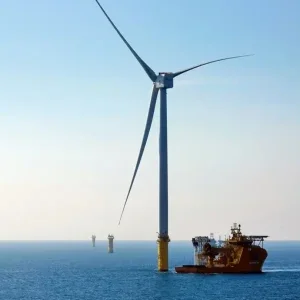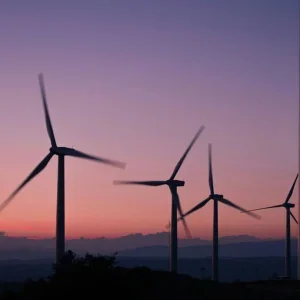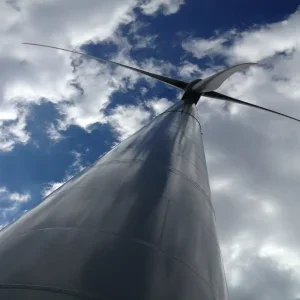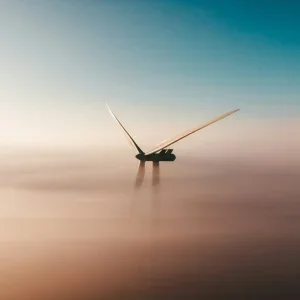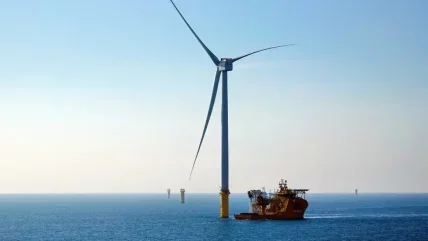
Europe’s wind energy market is at a critical juncture. There’s no denying it has an important role to play in the energy mix and in the palpable need to meet the continent’s ambitious carbon reduction targets. Yet, as one November 2022 New York Times headline put it, ‘Europe’s Wind Industry Is Stumbling When It’s Needed Most’.
You might expect such an assertion to be contested, and indeed it was. In fact, the figures add weight to any opposition such talk garnered. In 2022, the sector installed 15GW in new wind farms across the EU, one third more than 2021, according to Europe’s trade body, WindEurope. It also labels wind energy manufacturing as a “European success story”, supported by a large industrial ecosystem comprising 250 manufacturing facilities.
However, even WindEurope has acknowledged the challenges faced by the industry in recent years. “A combination of inflation and unhelpful government interventions in electricity markets is undermining investments in new wind farms,” it acknowledged in a press release in January 2023, adding that 2022 had been a difficult year for the supply chain, with stubbornly high inflation hitting turbine manufacturers and suppliers hard. The European Commission (EC) has also recognised those difficulties, leading President Ursula von der Leyen to announce a European Wind Power Action Plan that the EC says will ensure the energy transition goes “hand-in-hand with industrial competitiveness”.
Among the difficulties, according to the EC, are insufficient and uncertain demand; slow and complex permitting; lack of access to raw materials; high inflation and commodity prices; unsupportive design of national tenders; increased pressure from international competitors; and risks to the availability of a skilled workforce – an ominous list on the face of it.
It’s plan, though, welcomed as a “game-changer” by WindEurope, includes six action points: increased predictability and faster permitting; supporting member states to improve their auction design; the introduction of an innovation fund to speed up investment and financing; continued monitoring of potentially unfair trade practices from international competitors, taking action where necessary; a renewed focus on developing skills; and engagement with the sector to develop an EU Wind Charter to improve the enabling conditions for the industry to remain competitive.
But right now the sector is sluggish, as Jonas Wahlström, head of product management at ABB’s wind division, can attest to. Branding today’s market “very slow”, he says it takes a long time between decisions being made and the construction and eventual commencement of commercial operation – a nod to the comments made by the EC.
Big challenge, smaller solution
Aside from the current climate, wind is a market with great potential – one that ABB is eager to support. However, Wahlström accepts that costs for materials, as an example, have risen and this may be impacting decisions made by the industry and ABB’s customers.
It’s a proposition that isn’t without merit – after all, as wind turbines have got bigger, so too has the amount of raw materials required to build them. Highlighting this fact, the UK’s first conventional offshore wind farm – situated off the North Wales coast – boasted 2MW turbines; in 2023 the North Sea Dogger Bank wind farm, which when completed will be the world’s largest offshore facility at 3.6GW, is home to GE’s Haliade-X turbine. Standing at a quarter of a kilometre above the water’s surface, each of these turbines have an energy capacity of 13MW.
Wahlström believes part of the solution – and indeed the natural progression of components – to reducing costs is to optimise the integral parts of these increasingly large turbines. This, he argues, is where medium-voltage (MV) wind converters can thrive. MV wind converters, with typical voltage ranges of 3.3kV to 6.6kV, is an area that ABB has been working in since the 1980s, being one of the first developers for both wind and industrial applications.
Today, as wind turbines grow, and with the next generation expected to reach energy capacities of at least 20MW, MV wind converters are set to become increasingly integral for power conversion. They are an eye-catching alternative to low-voltage (LV) systems being used, helping to reduce currents and losses in generators, converters and cables. Although LV converters have been used in large offshore turbines, they pose challenges when used on some of today’s largest models. They increase the need for power components and ultimately the cost of turbines themselves, thanks to the larger size and weight of the nacelle, and come with concerns surrounding reliability in general.
“The fewer components you have, the more likely it is that nothing will fail, and the more possible it is to make a very compact and light converter.”
It is, therefore, arguably the age of the MV wind converter. With the ability to help reduce size, weight and cabling, they provide higher operating voltages – meaning the drivetrain can work at lower currents, thus reducing the costs of cabling, switchgears and other components in the drivetrain. Wahlström says that for ABB, although it does manufacture a catalogue of other converters, both LV and MV, a 3.3kV converter currently ticks all the boxes; providing optimal performance while using the fewest components possible.
13MW
The energy capacity of GE’s Haliade-X turbines in the Dogger Bank wind farm in the North Sea.
GE
ABB’s MV wind converters also feature highefficiency integrated gate-commutated thyristor (IGCT) technology. Originally developed by ABB, IGCT helps control high electric current and voltages seamlessly. Hinting that there might be further developments in coming months and years, as the supply chain works on enhancements such as the semiconductors, Wahlström says for now the 3.3kV converter is the benchmark.
“The semiconductor has, practically speaking, no lifetime restrictions, so it doesn’t need to be replaced during the turbine’s lifetime. This is, of course, a high cost saving.”
However, he stresses, keeping components down to a figure that is “as low as possible” is key to ensuring they provide the best reliability, today and in the future. This, Wahlström adds, will be a compelling proposition for all parties – for cost, reliability and availability reasons. “The fewer components you have, the more likely it is that nothing will fail […] and the more possible it is to make a very compact and light converter,” he continues. This is where selecting the right semiconductor can drive the entire design process to deliver something “which fits into the industry as good as possible, from early on”.
3.3 – 6.6kV
The typical voltage ranges of ABB’s MV wind converters.
ABB
Speaking more generally, MV wind converters offer an array of benefits for both turbine OEMs and its end users, the operators. OEMs, as Wahlström explains, can make smaller systems due to the increase in voltage, meaning the current goes down and it requires less copper and fewer cables. As a result, generators can be lighter and transformers smaller, making it easier to build a wind turbine.
Operating efficiently
“The second [benefit] is clearly efficiency,” Wahlström notes. The use of MV offers improved efficiency for the drivetrain and ultimately the entire turbine. “Therefore, turbine OEMs can build easier, smaller turbines – and get more power out of individual turbines.”
ABB also boasts that its IGCT technology components would likely continue operating far beyond the lifespan of the wind turbine itself. “You could say it’s an almost eternal component,” Wahlström declares. “The semiconductor has, practically speaking, no lifetime restrictions […] so it doesn’t need to be replaced during the [turbine’s] lifetime. This is, of course, a high cost saving.” IGCTbased MV wind converters are also fuseless, instead using other inherent protection mechanisms further increases their reliability.
It seems they will likely become critical to today’s offshore wind sector, and that of tomorrow – if indeed, they haven’t already. As the demand for wind power grows, naturally increasing the demand for larger turbines, ABB’s next-generation MV wind converters – with ratings up to and even beyond 20MW – will deliver in the region of a 33% uplift in power, with a similar quantity of components as their lowerpower predecessors. Offering what the company describes as a significant improvement to grid stability thanks to their improved capability to handle higher power output and stabilise voltage and frequency fluctuations, wind farm operators could capitalise on the increased efficiency, reliability and profitability with a lower total cost of ownership.
Adding to this, Wahlström highlights the enhanced data collection and analysis capabilities of these newer technologies, an area that he says is growing in importance for ABB’s customers. MV wind converters are progressively capable of cloud connectivity, allowing enhanced operational oversight across individual turbines and entire fleets. This means operators and turbine OEMs “have all the data available to make the right decisions on long term”, he says.
It seems the offshore wind industry has a bright future, full of huge potential, yet with increasingly small components. For now, though, as Europe fends off international competition, the ABBs of the continent are on a mission to offer products with a shore-side appeal – reliability, efficiency and cost savings.


